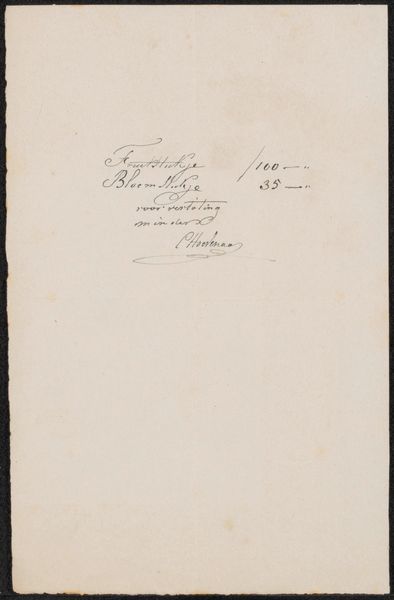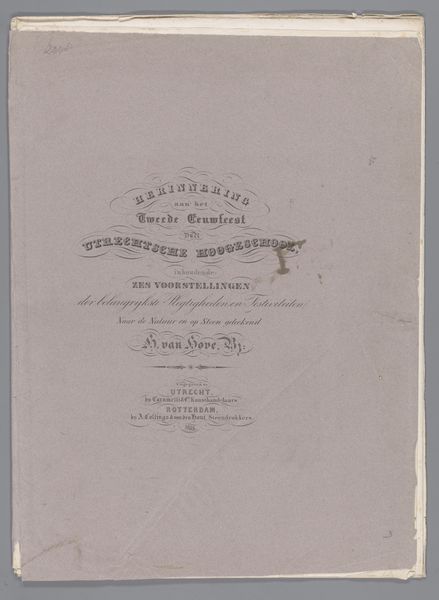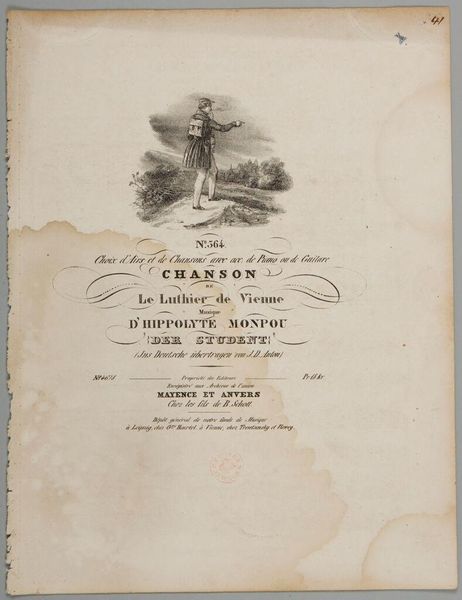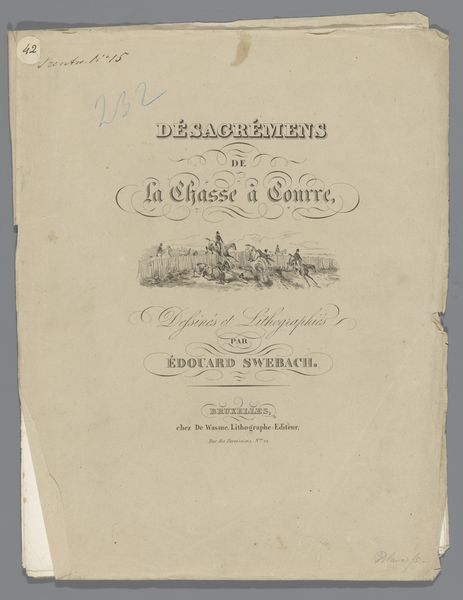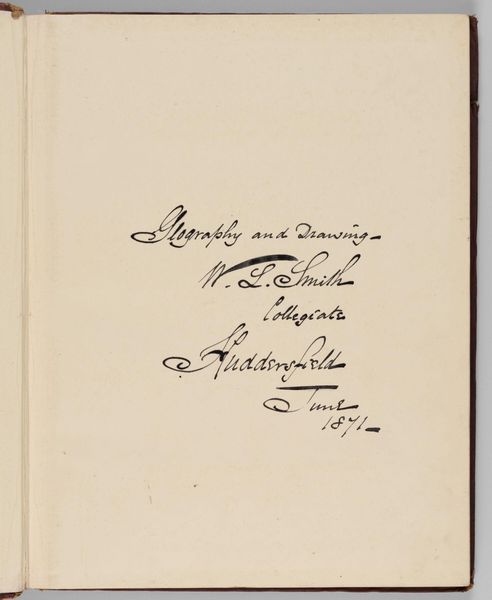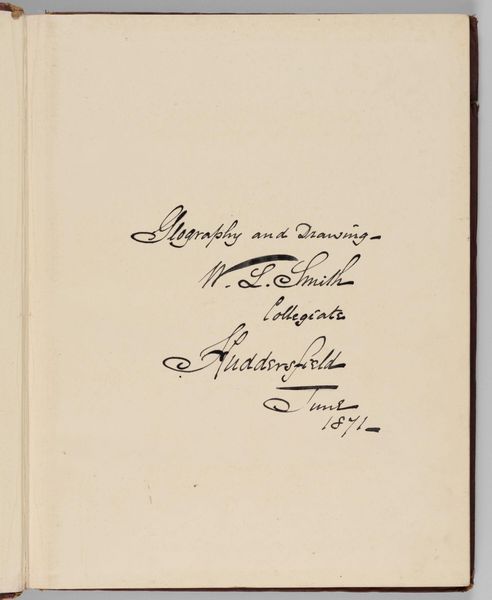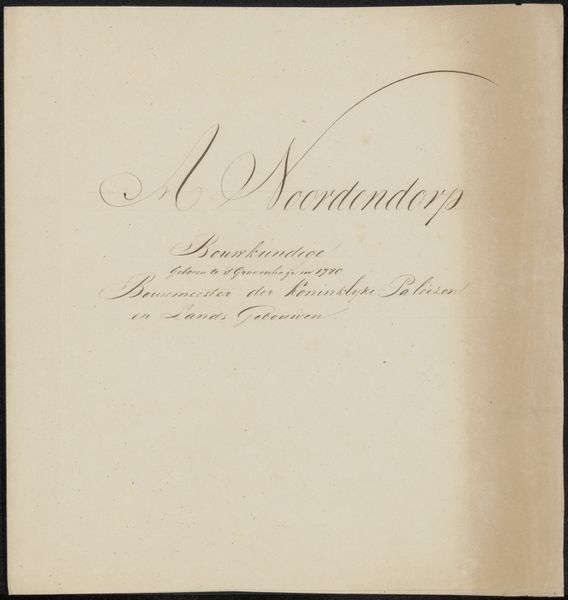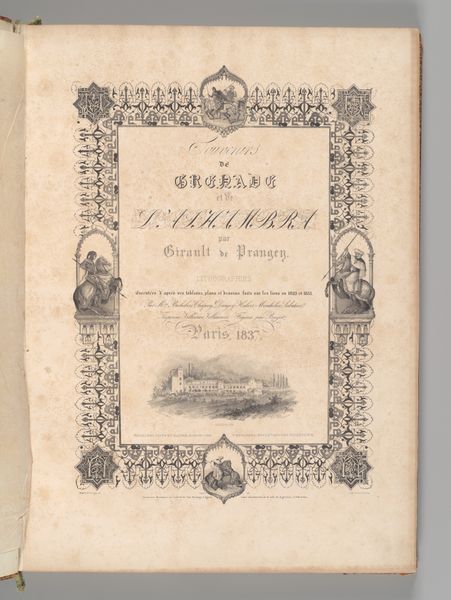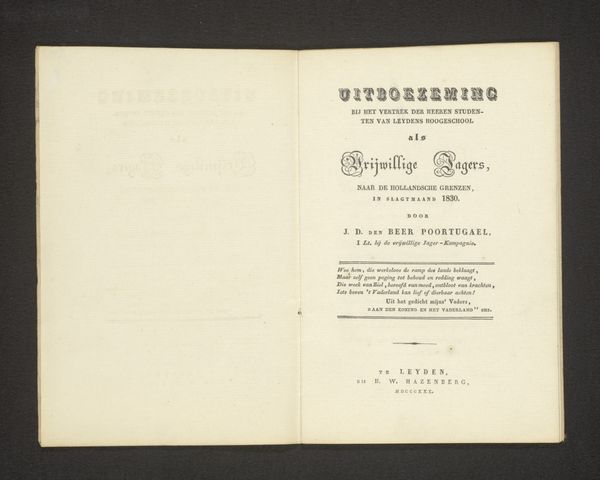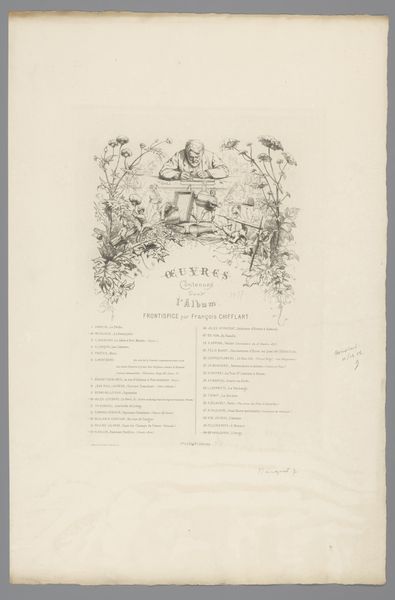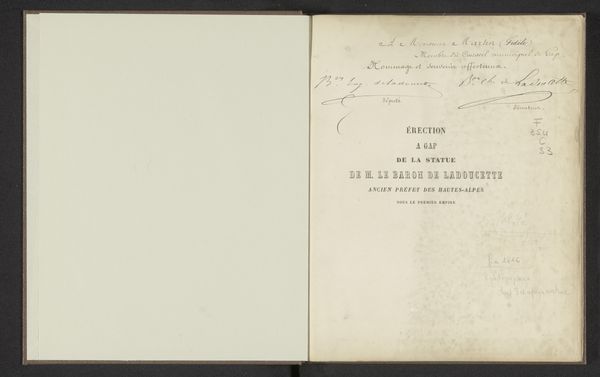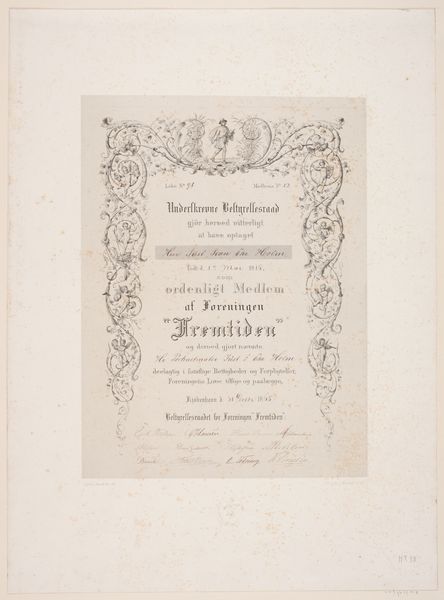
# print
#
landscape
#
river
#
cityscape
Dimensions: height 525 mm, width 375 mm, height 525 mm, width 750 mm
Copyright: Rijks Museum: Open Domain
Curator: This work, an early 19th-century print from the Rijksmuseum's collection, is titled "Omslag voor Arnhem en zijne environs," created sometime between 1827 and 1927. Editor: Immediately, it whispers 'antique' to me. The typography is really lovely, like something from a rare bookshop, even though it's essentially a landscape view of Arnhem's surroundings, very restrained. Curator: It functions as a sort of advertisement. Consider printmaking practices and their importance. Cheaply mass-produced images democratize visual media by offering an idea to be widely circulated. This image isn’t so much about “high art”, but is directly associated with expanding notions of how people visualized and conceptualized place. Editor: I'm struck by its almost photographic clarity, yet it's an engraving. There's an artisan at work. How do you imagine people at the time received a cover like this? It is not a grand vista or statement, instead more of a whisper? Curator: Probably as informational, a matter-of-fact guide to the region. Notice the detail invested even though, in today's perspective, this seems plain. We may perceive it as delicate craftsmanship but for its time, the purpose would be largely utilitarian: an aesthetic means toward pragmatic distribution and sale of related published matter. Editor: And did the act of seeing Arnhem through a print alter the experience of being in Arnhem, you think? It is like imagining one's face or the familiar face of a relative being mediated and remade. Curator: Well, seeing IS believing, according to traditional western notions of scientific objectivism. Landscape prints like this had a tremendous influence. It established the "look" of Arnhem for a consumer base while shaping market appetites. This intersection is where the material nature of image production meets the expansion of 19th century commodity culture. Editor: Fascinating, this image almost disappears. Now I recognize it not just as an item but as a cultural artifact reflecting modes of commerce. Curator: Exactly, and there is so much packed inside an outwardly unassuming print like this that one almost entirely misses when just passing it by.
Comments
No comments
Be the first to comment and join the conversation on the ultimate creative platform.

